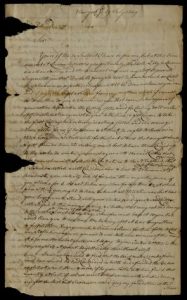In the May 2017 issue of Perspectives on History, an article caught my eye. Andrew Koch’s “Many Thousands Failed: A Wake-up Call for History Educators,” addressed several salient issues tangentially related to Sam Wineburg’s “Why Historical Thinking is Not About History.” However, instead of looking at technology and how we choose credible sources, Koch focuses on undergraduate courses in general and the types of students who succeed and fail. He writes, “The 20th-century novelist and social critic James Baldwin observed in . . . Many Thousands Gone, ‘The story of the Negro in America is the story of America—or, more precisely, it is the story of Americans. It is not a very pretty story.’ In the . . . essay, Baldwin pointedly condemns how popular culture reinforces stereotypes of African Americans. But had he written the essay today, more than 60 years later, he could have just as easily been describing what is going on in introductory US history courses. More precisely, it is the story of all students, particularly those from historically underrepresented backgrounds, who enroll in the course. And it, too, is not a pretty story.”
Koch articles goes on to show data that reflects the role of race, gender, and class in undergraduate history course retention rates. Racial and ethnic minorities are the least likely to pass a US intro history course, and males have a higher rate of failure than females.
Although Wineburg and Koch are talking about different things, when I read Wineburg’s article I thought of Koch’s “Many Thousands Failed.” Wineburg argues that “reliable information is to civic intelligence what clean air and clean water are to public health.” This is a critical point, and one that history educators must confront in addition to the many other content- and pedagogical-related choices teachers make on a daily basis. His example from Our Virginia regarding slaves fighting for the Confederacy is part of a historical narrative that is surely a factor in the results produced by the Gardner Institute study cited by Koch. Are not all of this issues related? And shouldn’t the solutions be related as well?
Wineburg’s points are all well taken, we do indeed live in an age where historiography and intellectual authority is ruled by a “digital mob.” But Koch raises another fundamental issue: “In an era of alternative facts and extreme vetting, it is easy to feel powerless. But the issues in introductory history courses—a form of vetting, too—existed long before 2016. That is not an alternative fact. If inequity in the United States concerns you, and inequitable outcomes exist in the courses you and your colleagues teach, then it is important to remember that you have agency to address this.”
I think that digital media and online sources play a major role in addressing such inequities. At times it can seem an overwhelming task to address such different but related issues: 1) MACRO (Koch, what courses and content we teach) and 2) MICRO (Wineburg, how we teach courses and content). But they both affect student learning and success and beg the question, “Who is in the course, which students are learning, and by what definition do we measure success?” Digital media can be used to reshape both the what and how — one informs the other. Because if history educators do not fill the information vacuum with honest and accurate presentations of events, people, and evidence — the internet will. It is a tall order. Nevertheless, we must persist.


